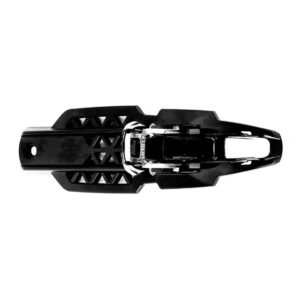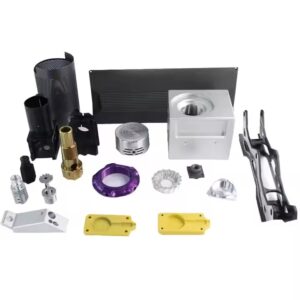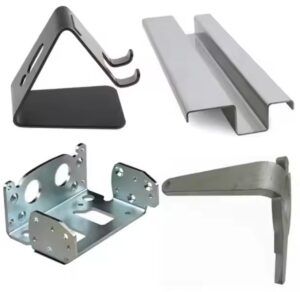Today, I want to talk about something close to my heart—how metal parts power the outdoor gear market, especially in products like ski equipment. If you’ve ever hit the slopes or ventured into the mountains, chances are you’ve relied on metal components to keep you safe and performing at your best. Let me break it down for you.
1. Metal in Ski Equipment: A Game-Changer for Strength and Durability
When it comes to skiing gear, durability and performance are non-negotiable. Metal components play a critical role in ensuring that ski equipment can handle extreme conditions, from freezing temperatures to high stress during high-speed descents.
Key Areas Where Metal is Used in Ski Gear:
- Ski Bindings:
Ski bindings are one of the most critical safety components in skiing. High-strength metals like aluminum alloys are used because they’re lightweight yet robust enough to endure repeated impacts and weight shifts. Bindings need to release reliably during a fall, and metal ensures precision in the release mechanism. - Ski Poles:
Many high-performance ski poles are made with aluminum or carbon-reinforced metals. Aluminum provides a great balance of strength and flexibility, ensuring the pole doesn’t snap under pressure. Plus, its corrosion resistance is a big advantage in wet, snowy conditions. - Edging Strips on Skis and Snowboards:
The metal edges at the base of skis and snowboards are usually made of stainless steel. These edges provide durability and sharpness, giving riders better control and grip on icy surfaces while resisting wear and rust.
2. Climbing and Mountaineering Gear: Safety Above All
Let’s shift gears to climbing and mountaineering—areas where metal parts need to be absolutely reliable. After all, lives depend on their performance.
Core Metal Components in Climbing Gear:
- Carabiners and Clips:
Typically made of aluminum or steel, carabiners are the lifeline of climbers. Aluminum carabiners are lightweight, making them ideal for sport climbing, while steel carabiners are used in industrial or heavy-duty scenarios where extra strength is needed. - Crampons:
These spiked metal attachments for boots are made of high-carbon steel or stainless steel. They need to withstand extreme pressure and resist rust while gripping ice and rock during climbs. - Harness Buckles and Load-Bearing Points:
Harnesses use high-strength aluminum or steel buckles to secure climbers. These components are precision-engineered to handle dynamic loads and ensure safety.
3. Camping and Hiking Gear: Lightweight and Reliable
For camping and hiking enthusiasts, weight and durability are key considerations. Metal components are used to create gear that’s portable yet robust enough to handle the demands of the wilderness.
Examples in Camping Gear:
- Tent Poles:
Aluminum tent poles are a staple in the outdoor gear industry. They’re lightweight, corrosion-resistant, and flexible enough to withstand heavy winds without snapping. - Backpack Frames:
Internal and external frames in high-performance backpacks are often made from aluminum alloys. These frames provide structure and support while keeping the overall weight low. - Cookware and Tools:
Stainless steel is commonly used for outdoor cookware and multitools because it’s durable, easy to clean, and doesn’t react with food or liquids. Titanium is another popular choice for its lightweight properties, especially in gear for ultralight backpackers.

4. Custom Metal Fabrication for Outdoor Gear
At our factory, we’ve worked with outdoor gear manufacturers to create custom metal components that meet specific design and performance needs. Whether it’s a unique locking mechanism for a camping stove or a lightweight alloy for ski bindings, custom fabrication allows designers to push the boundaries of what’s possible.
Some Custom Projects We’ve Worked On:
- Specialized Ski Bindings:
A manufacturer needed a lightweight yet incredibly durable locking mechanism for their high-performance ski bindings. We worked with them to create a custom aluminum alloy part that not only reduced weight but also held up to rigorous testing in extreme conditions. - Backpack Support Frames:
For an ultralight backpacking company, we developed custom aluminum frames that reduced the overall weight by 15% while improving load distribution and comfort. - Collapsible Hiking Poles:
When a client wanted collapsible hiking poles that were compact but still strong enough for rugged terrain, we helped design a telescoping mechanism using anodized aluminum for maximum durability and aesthetics.
5. The Challenges and Advantages of Metal Components in Outdoor Gear
Advantages:
- Durability: Metal components can withstand significant wear and tear, making them ideal for gear exposed to harsh environments.
- Strength-to-Weight Ratio: Materials like aluminum and titanium offer excellent strength while keeping weight to a minimum.
- Corrosion Resistance: Metals like stainless steel and aluminum perform well in wet and snowy conditions without rusting.
Challenges:
- Cost: High-quality metals like titanium can be expensive, but the trade-off is durability and performance.
- Precision Fabrication: Many outdoor gear components require tight tolerances and exact specifications, which can increase manufacturing complexity.
Conclusion
If there’s one thing I’ve learned from working with outdoor gear manufacturers, it’s this: the right metal component can make or break a product. Whether it’s the edge of a snowboard cutting into ice or the carabiner holding a climber mid-air, these parts need to perform flawlessly every time.
At our shop, we take pride in crafting metal components that meet the toughest demands of the outdoor industry. We know these parts aren’t just pieces of metal—they’re the backbone of products that adventurers rely on to stay safe and enjoy their passions.
So, next time you’re out on the slopes or climbing a mountain, take a second to appreciate the engineering behind the gear you’re using. Chances are, there’s a piece of metal in there that’s doing a lot more than you realize.
Stay safe and keep exploring!




